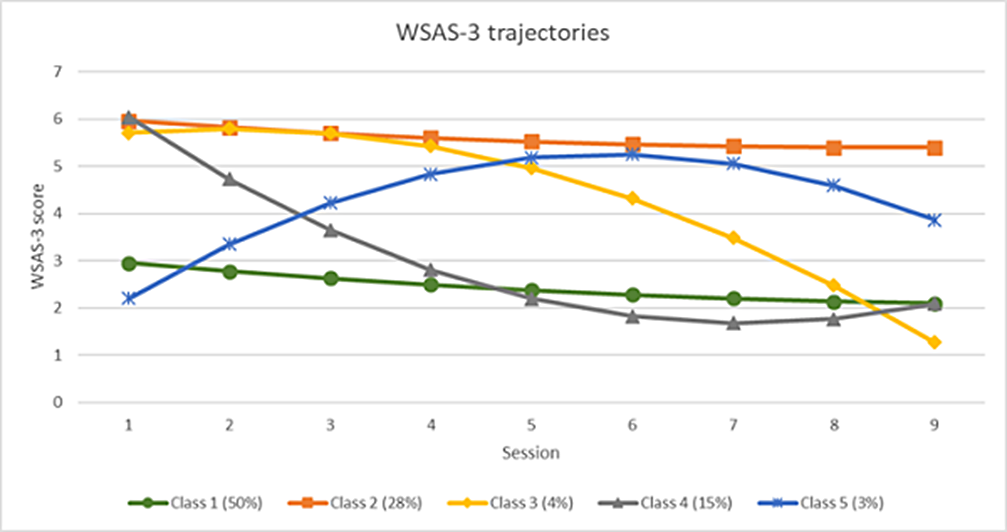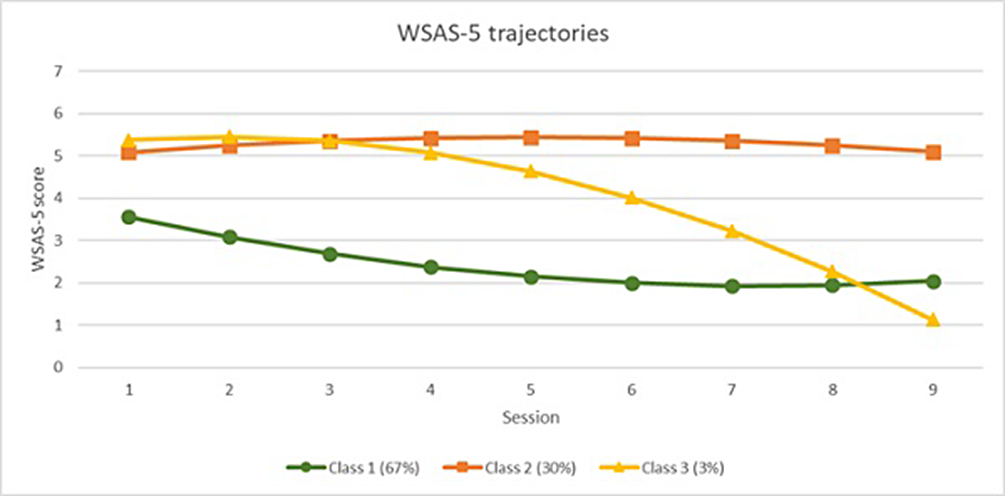186 results
The association between trajectory of change in social functioning and psychological treatment outcome in university students: a growth mixture model analysis
-
- Journal:
- European Psychiatry / Volume 67 / Issue S1 / April 2024
- Published online by Cambridge University Press:
- 27 August 2024, pp. S708-S709
-
- Article
-
- You have access
- Open access
- Export citation
Investigation on elastomer behaviour when exposed to conventional and sustainable aviation fuels
-
- Journal:
- The Aeronautical Journal / Volume 128 / Issue 1325 / July 2024
- Published online by Cambridge University Press:
- 13 August 2024, pp. 1485-1500
-
- Article
-
- You have access
- Open access
- HTML
- Export citation
D.4 Safety and efficacy of delandistrogene moxeparvovec versus placebo in Duchenne muscular dystrophy (EMBARK): Pivotal Phase 3 primary results
-
- Journal:
- Canadian Journal of Neurological Sciences / Volume 51 / Issue s1 / June 2024
- Published online by Cambridge University Press:
- 24 May 2024, pp. S9-S10
-
- Article
-
- You have access
- Export citation
Abating CO2 and non-CO2 emissions with hydrogen propulsion
- Part of
-
- Journal:
- The Aeronautical Journal / Volume 128 / Issue 1325 / July 2024
- Published online by Cambridge University Press:
- 02 April 2024, pp. 1576-1593
-
- Article
-
- You have access
- Open access
- HTML
- Export citation
Radiocarbon Dates from the Archaeological Site of Sakas, Bihar, India
-
- Journal:
- Radiocarbon / Volume 66 / Issue 2 / April 2024
- Published online by Cambridge University Press:
- 29 April 2024, pp. 267-279
- Print publication:
- April 2024
-
- Article
-
- You have access
- Open access
- HTML
- Export citation
Head and Neck Cancer: United Kingdom National Multidisciplinary Guidelines, Sixth Edition
-
- Journal:
- The Journal of Laryngology & Otology / Volume 138 / Issue S1 / April 2024
- Published online by Cambridge University Press:
- 14 March 2024, pp. S1-S224
- Print publication:
- April 2024
-
- Article
-
- You have access
- Open access
- HTML
- Export citation
Metrology for sub-Rayleigh-length target positioning in ∼1022 W/cm2 laser–plasma experiments
-
- Journal:
- High Power Laser Science and Engineering / Volume 12 / 2024
- Published online by Cambridge University Press:
- 05 March 2024, e32
-
- Article
-
- You have access
- Open access
- HTML
- Export citation
Rediscovery of Swertia dilatata var. pilosa after 140 years
-
- Article
-
- You have access
- Open access
- HTML
- Export citation
Influence of Citric Acid and Glycine on the Adsorption of Mercury (II) by Kaolinite under Various pH Conditions
-
- Journal:
- Clays and Clay Minerals / Volume 44 / Issue 1 / February 1996
- Published online by Cambridge University Press:
- 28 February 2024, pp. 41-48
-
- Article
- Export citation
Very long chain fatty acid–inhibiting herbicides: Current uses, site of action, herbicide-resistant weeds, and future
-
- Journal:
- Weed Technology / Volume 38 / 2024
- Published online by Cambridge University Press:
- 21 December 2023, e1
-
- Article
-
- You have access
- Open access
- HTML
- Export citation
Strengthening self-regulation and reducing poverty to prevent adolescent depression and anxiety: Rationale, approach and methods of the ALIVE interdisciplinary research collaboration in Colombia, Nepal and South Africa
- Part of
-
- Journal:
- Epidemiology and Psychiatric Sciences / Volume 32 / 2023
- Published online by Cambridge University Press:
- 13 December 2023, e69
-
- Article
-
- You have access
- Open access
- HTML
- Export citation
Ten new insights in climate science 2023
-
- Journal:
- Global Sustainability / Volume 7 / 2024
- Published online by Cambridge University Press:
- 01 December 2023, e19
-
- Article
-
- You have access
- Open access
- HTML
- Export citation
Evaluation of phenological development and agronomic traits in exotic common bean germplasm across multiple environments
-
- Journal:
- Plant Genetic Resources / Volume 21 / Issue 3 / June 2023
- Published online by Cambridge University Press:
- 29 August 2023, pp. 195-203
-
- Article
- Export citation
Water masers high resolution measurements of the diverse conditions in evolved star winds
-
- Journal:
- Proceedings of the International Astronomical Union / Volume 18 / Issue S380 / December 2022
- Published online by Cambridge University Press:
- 07 February 2024, pp. 389-391
- Print publication:
- December 2022
-
- Article
-
- You have access
- Open access
- Export citation
Ten new insights in climate science 2022
-
- Journal:
- Global Sustainability / Volume 5 / 2022
- Published online by Cambridge University Press:
- 10 November 2022, e20
-
- Article
-
- You have access
- Open access
- HTML
- Export citation
Nutritional content, protein quantity, protein quality and carbon footprint of plant-based drinks and semi-skimmed milk in the Netherlands and Europe
-
- Journal:
- Public Health Nutrition / Volume 25 / Issue 5 / May 2022
- Published online by Cambridge University Press:
- 23 February 2022, pp. 1416-1426
-
- Article
-
- You have access
- Open access
- HTML
- Export citation
P.144 Patient-relevant deficit dictates EVT decision-making in low NIHSS patients with medium vessel occlusion stroke
-
- Journal:
- Canadian Journal of Neurological Sciences / Volume 48 / Issue s3 / November 2021
- Published online by Cambridge University Press:
- 05 January 2022, p. S61
-
- Article
-
- You have access
- Export citation
P.145 Perceived Limits of Endovascular Treatment for Secondary Medium Vessel Occlusion Stroke
-
- Journal:
- Canadian Journal of Neurological Sciences / Volume 48 / Issue s3 / November 2021
- Published online by Cambridge University Press:
- 05 January 2022, p. S61
-
- Article
-
- You have access
- Export citation
Catatonia in autism spectrum disorders: A systematic review and meta-analysis
-
- Journal:
- European Psychiatry / Volume 65 / Issue 1 / 2022
- Published online by Cambridge University Press:
- 15 December 2021, e4
-
- Article
-
- You have access
- Open access
- HTML
- Export citation
Atom Probe Tomography for Isotopic Analysis: Development of the 34S/32S System in Sulfides
-
- Journal:
- Microscopy and Microanalysis / Volume 28 / Issue 4 / August 2022
- Published online by Cambridge University Press:
- 12 November 2021, pp. 1127-1140
- Print publication:
- August 2022
-
- Article
- Export citation




